
Gigantometrus swammerdami, commonly called the giant forest scorpion, is a scorpion belonging to the family Scorpionidae. It is native to India. It is the world's largest scorpion species with 23 cm (9 in) in length, and weigh as much as 56 g (2.0 oz).
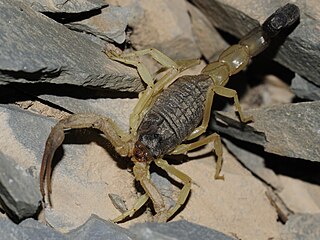
Hottentotta is a genus of scorpions of the family Buthidae. It is distributed widely across Africa, except for most of the Sahara desert. Species in the genus also occur in the Middle East, the Arabian Peninsula, southeastern Turkey, Iraq, Iran, Afghanistan, Pakistan, India, Nepal, Cape Verde Islands, and Sri Lanka (introduced).

Hottentotta tamulus, the Indian red scorpion, also known as the eastern Indian scorpion, is a species of scorpion of the family Buthidae. It occurs in most of India, eastern Pakistan and the eastern lowlands of Nepal, and recently from Sri Lanka.
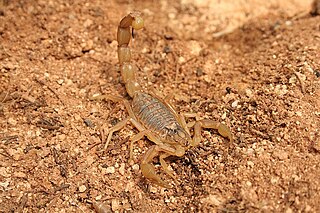
Buthus is a genus of scorpion belonging and being eponymous to the family Buthidae. It is distributed widely across northern Africa, including Morocco, Mauritania, Algeria, Tunisia, Libya, Egypt, Senegal, Guinea-Bissau, Nigeria, Sudan, Somalia, Ethiopia, Djibouti, as well as the Middle East, including Israel, Palestine, Jordan, Lebanon, Iraq, Yemen, and possibly Saudi Arabia and southern Turkey. Its European range includes the Iberian Peninsula, southern France, and Cyprus.

Tityus exstinctus is an extinct species of scorpion belonging to the family Buthidae. It is only known from a single male collected in 1884 in the northern range of Martinique. The species epithet based on the fact that this taxon was already extinct when it was described.
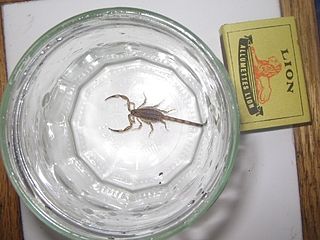
Isometrus is a genus of scorpion belonging and being eponymous to the family Buthidae. Some species are currently assigned to the genus Reddyanus.

Isometrus maculatus, commonly as the lesser brown scorpion, is a species of scorpion in the family Buthidae. Its distribution is pantropical; it is an introduced species in Hawaii.
Reddyanus basilicus is a species of scorpion in the family Buthidae.
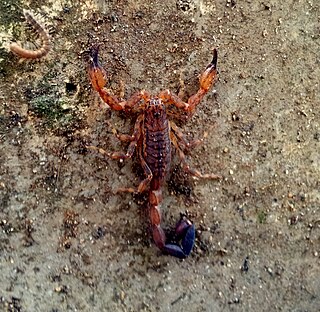
Reddyanus besucheti is a species of scorpion in the family Buthidae endemic to Sri Lanka.
Isometrus thurstoni is a species of scorpion in the family Buthidae. The newly discovered Isometrus species, Isometrus kovariki, from the Western Ghats region of India, is closely related.
Isometrus thwaitesi is a species of scorpion in the family Buthidae endemic to Sri Lanka.
Reddyanus loebli is a species of scorpion in the family Buthidae.

Liocheles australasiae, the dwarf wood scorpion, is a species of scorpion belonging to the family Hormuridae.
Srilankametrus gravimanus is a species of scorpion belonging to the family Scorpionidae. It is native to India and Sri Lanka.
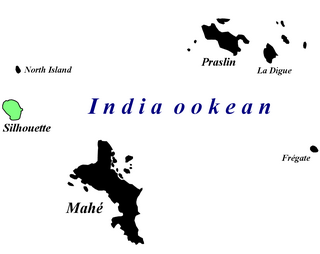
Afrolychas braueri, commonly known as the Seychelles forest scorpion, is a species of scorpion in the family Buthidae. It is currently thought to survive only on Silhouette Island, Seychelles, although the species was historically found on two additional Seychellois islands. This scorpion lives in leaf litter in forests that are largely unaffected by invasive plant species. It is a small yellowish-brown scorpion with three prominent keels on the dorsal surface of its mesosoma, which distinguishes it from other scorpions. While not much is known about the Seychelles forest scorpion's ecology due to the paucity of sightings, it is known to rely solely on its venom to capture its prey and defend its young. Its venom is not dangerous to humans.

Reddyanus is a genus of buthid scorpions native to Oriental region from India, Sri Lanka, China: Tibet, to Melanesia. The genus was previously described as a subgenus of Isometrus.
Reddyanus jayarathnei is a species of scorpion in the family Buthidae endemic to Sri Lanka.
Reddyanus ranawanai is a species of scorpion in the family Buthidae endemic to Sri Lanka.
Heterometrus serratus is a species of scorpion in the family Buthidae endemic to Sri Lanka where it is restricted to southern parts.










